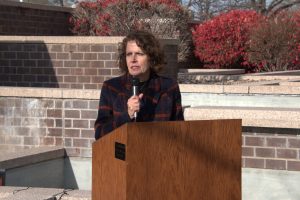UNDATED – A planned gold exploration project in South Dakota’s northern Black Hills has resulted in 1,774 written comments from local officials, tribal nations and others, including many who say the drilling would threaten Spearfish Canyon.
Solitario Resources, a Colorado-based company, plans up to 49 drill sites on public land. Many of the sites are just above and beyond the eastern rim of a canyon segment extending southwest from Cheyenne Crossing, 13 miles south of Spearfish. The company will study core samples from the drilling to determine the potential for a mine.
The U.S. Forest Service has an obligation under the General Mining Law of 1872 to permit mineral exploration on federal lands that haven’t been closed to exploration or mining. After an initial review of the project plan, the Forest Service said the project may not have enough extraordinary circumstances to require an environmental assessment. Opponents argue the location’s geology and cultural significance meet the legal threshold for further environmental scrutiny.
The Forest Service received the written feedback during a recent public comment period.
In an opposition resolution signed July 21, Spearfish Mayor John Senden and the City Council noted the drill sites are within the Spearfish Creek watershed, a key recharge area for the Madison aquifer, which supplies the city’s water. The resolution said that without a deeper study into the environmental impacts, the city opposes the project.
Some letters raised concern about the drilling happening near the canyon’s fragile rock formations, and whether that might cause rocks to come tumbling down.
The Norbeck Society, a local conservation group, wrote that the Forest Service should take a “hard look” at the project’s environmental impact.
“The impacts on water quality and species viability of animals in the project and across the forest are concerning,” the society wrote.
Some of the proposed drill sites are located near trails, which commenters said are used by hikers, hunters and off-road vehicle users year-round. Solitario’s plan would disrupt the quiet area, some commenters wrote.
“Our organization exists to protect the outdoor heritage of hunting and fishing in a natural setting, and we do so through active stewardship of the wild public lands, waters, and wildlife that make these traditions possible,” wrote Cody Grewing, chair of South Dakota Backcountry Hunters & Anglers. “As such, we are deeply concerned about the potential impacts that this project poses to the ecological, recreational, and cultural integrity of the northern Black Hills.”
Solitario is not new to exploratory drilling near Spearfish Canyon. The company drilled 11 holes averaging 1,300 feet deep last year in another area near the canyon, after receiving approval for that plan in April 2024.
Chris Herald, Solitario Resources’ chief executive officer, said further environmental studies are unnecessary and called the concerns regarding water impacts unfounded. He said drill holes are filled before the rig ever leaves the drill site, and the company has a $125,000 reclamation bond to help cover any problems.
Solitario is one of several companies conducting exploratory drilling in various areas of the Black Hills, which has been mined continually since the late 1800s. Since the closure of the massive Homestake Mine, the only large-scale, active gold mine in the region is the Wharf Mine near Lead.
“The Homestake-Wharf district is one of the most important gold districts in the United States,” Herald said. “If we do find a gold deposit, it will provide the highest paying jobs in the local area.”
The Forest Service will now review the comments and determine whether to approve the plan with changes to minimize impacts identified by opponents, or whether enough extraordinary circumstances exist to require an environmental assessment.





